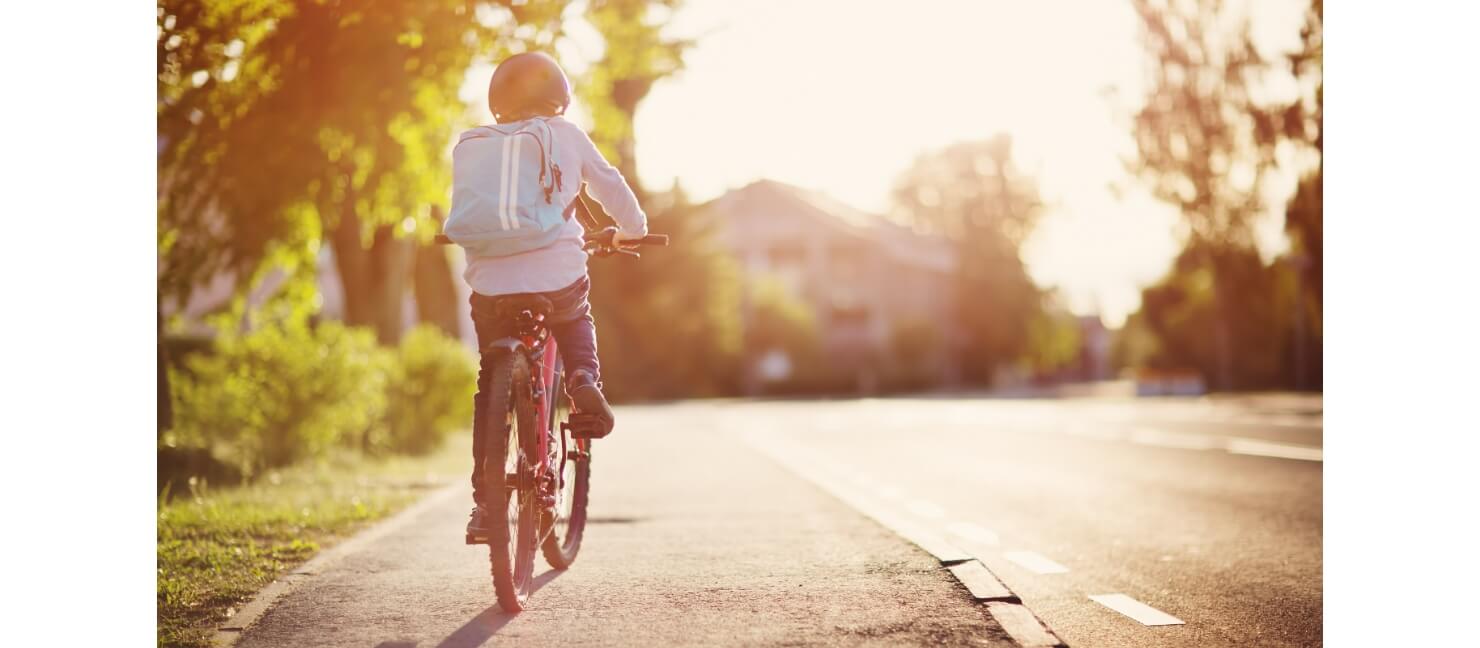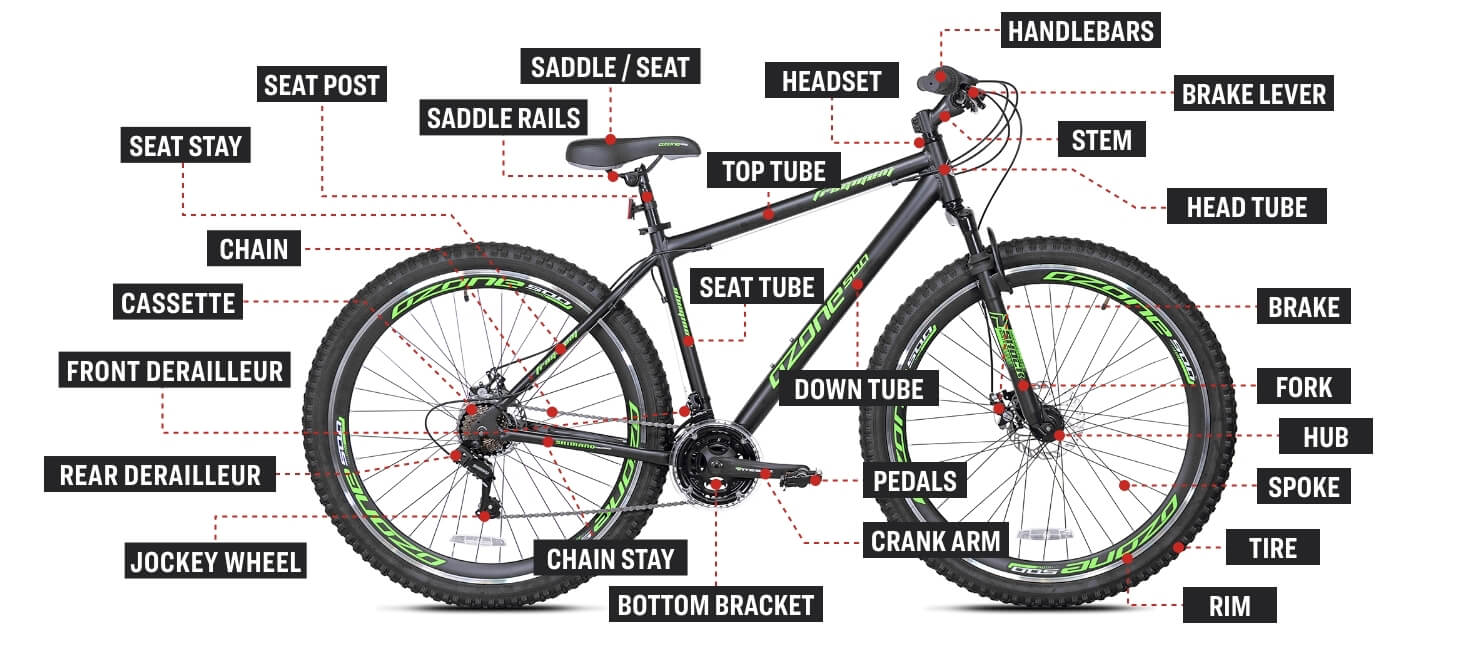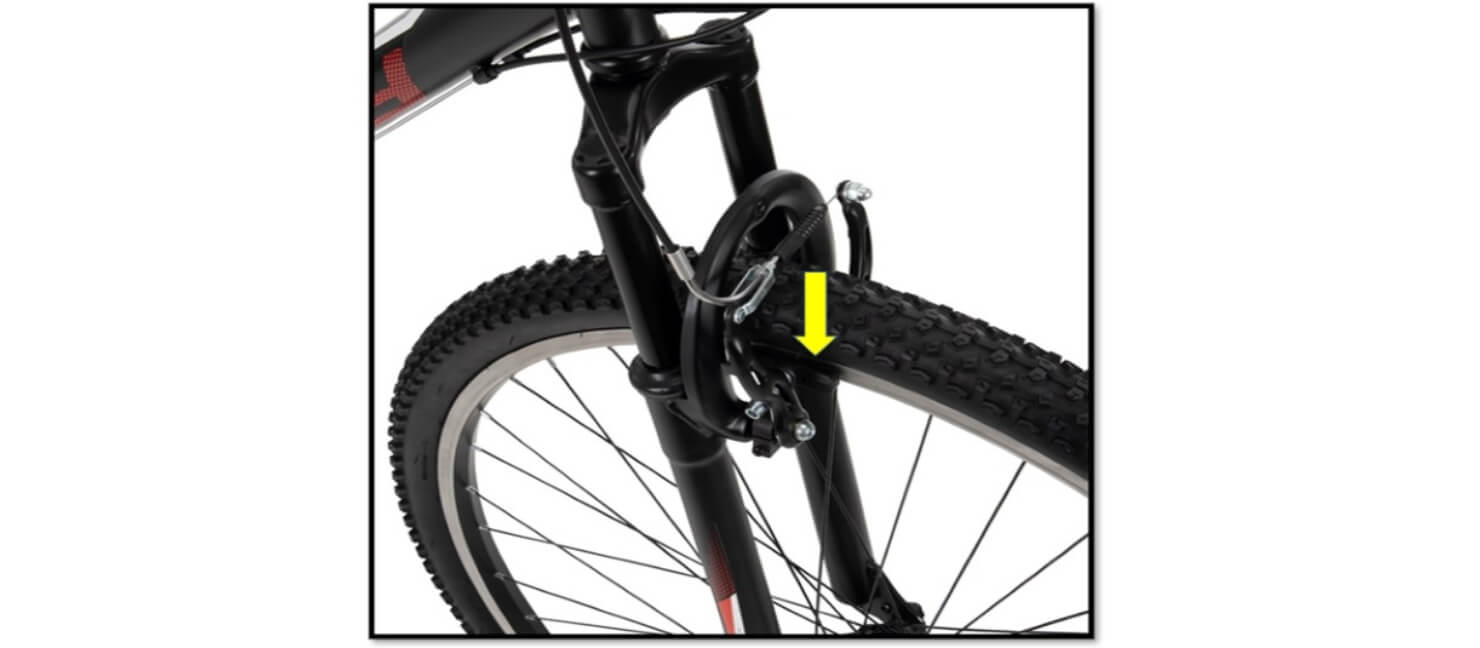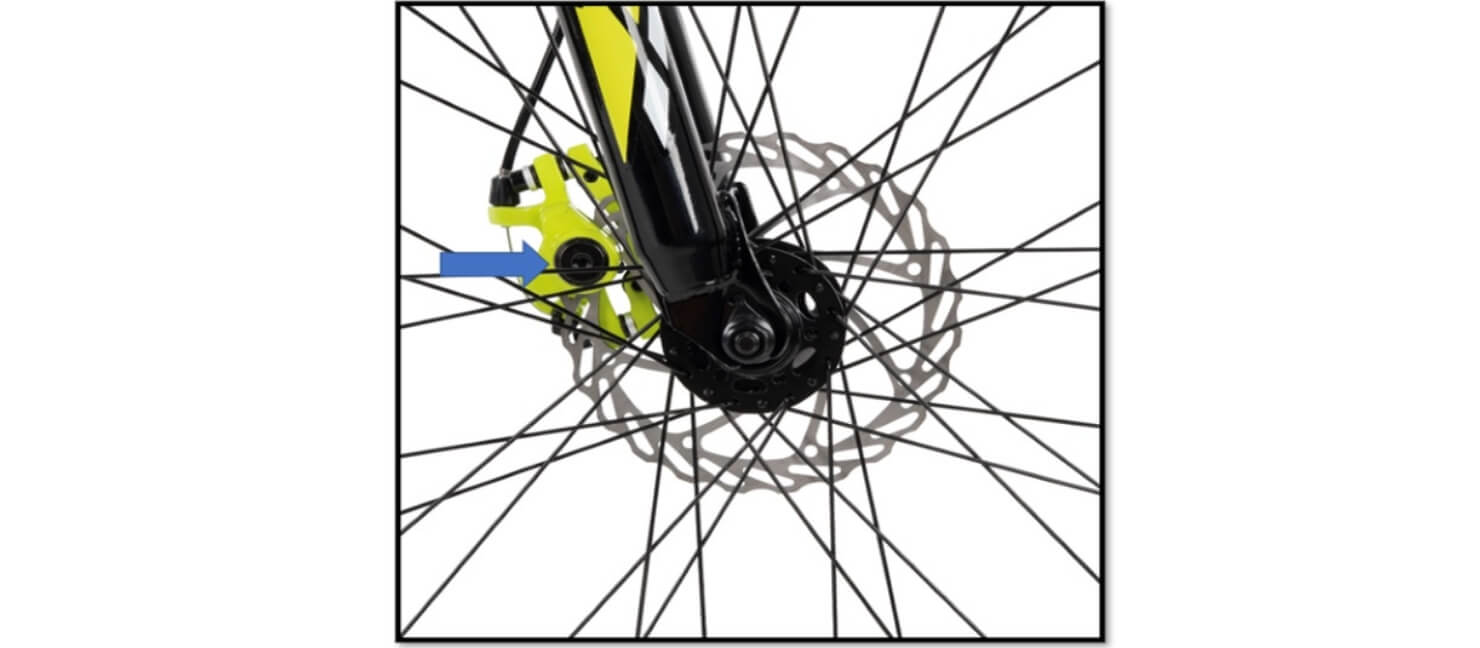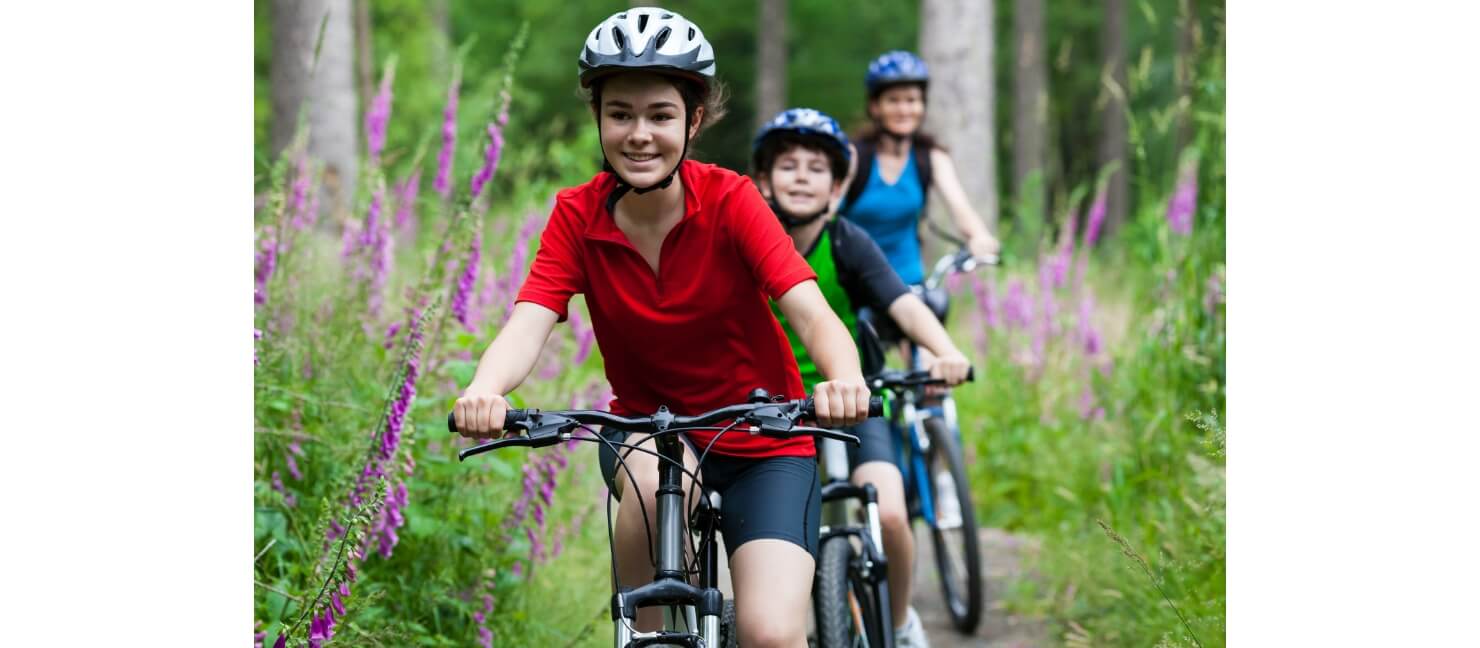Disc brakes are placed on a metal disc that's attached to the wheel hub. While most
common for mountain bikes, hybrid bikes, and touring cycles, disc brakes have become
increasingly used on all bike types.
EXPERT TIP: For frequent biking in wetter or colder climates,
consider choosing a bike with disc brakes, which provide better performance in wet,
muddy, or snowy conditions.
Hub – The hub is made up of 3 parts:
- the hub shell: the outer component that attaches to the spokes
- the axle: a bar that protrudes on both sides, and that attaches to the bike
frame
- the bearings: reside between the axle and shell, allowing the latter to spin
around the axle
Rim – This metal circle forms the outside of the wheel. If they’re
used with rim brakes, you’ll notice a smooth surface on the side (sidewalls) for the
brake pads’ grip.
Spoke – Spokes connect the hub to the rim, applying even tension in
all directions. This reinforces the wheel’s stability and strength so that the wheel
can support the rider’s weight and force when pedaling.
Tire – A bike without
tires won’t travel too far! The tire is mounted onto the
wheel rim and provides traction, control, and handling while also standing up to
natural elements and road hazards. Regular monitor and check your tires’ inflation
before every ride. Use a
tire pump to air them up if the pressure is too
low.
Middle of Bike Parts
Saddle/Seat – The saddle (although commonly referred to as the
bike seat,
saddle is the actual name) is the part of
the bike where you sit. Bike saddles come in a wide variety of shapes and sizes and
are often one of the more customized bike features.
Saddle Rails – These rails are found beneath the saddle to connect
it to the seat post. Saddle rails also slide so the rider can adjust the seat back
and forth.
Seat Post - The seat post adjusts the saddle height for the rider’s
comfort. It is fastened in place by tightening a clamp near the top of the seat
tube.
Seat Tube – The seat post is inserted into the top of this tube,
which runs from beneath the saddle to the pedals. The seat post height adjustment is
dependent upon how high or low the seat post is adjusted into the seat tube.
Top Tube - Also referred to as the crossbar. This is the
tube the rider steps over to mount a bicycle. Top tubes typically run parallel to
the ground, but they might be slightly angled on some models. Some bikes have no top
tubes at all for easier mounting.
Down Tube – The down tube – typically the thickest part of the bike
frame where you’ll see the bike’s logo – runs from beneath the handlebars down to
the pedals. This is also where you can attach a
bottle water cage for your
bike bottle.
Pedals – The bike pedals move the bike’s wheels forward when force
is applied to them. On coaster bikes, the pedals are also used for braking
(backpedal brakes).
Crank Arm – The crank arm holds the bike pedals in place. It is
connected to the bottom brackets on the bike frame.
Bottom Bracket – Comprised of bearings and a spindle, this is where
the crank arms rotate (fitting into the bottom bracket shell at the base of the
frame).
Back of Bike Parts
Seat Stays - Seat stays run from beneath the saddle to the rear
wheel hub. Seat stays end at points referred to as rear dropouts, which connect to
each side of the rear wheel axle.
Chainstays – Chainstays are tubes that run parallel to the ground,
from the sides of the pedals to both sides of the rear wheel. The chainstays run
alongside the bike chain.
Chain – The bike chain transfers your leg power to the rear wheel.
The chain loops around the chainrings within the crankset, along the chainstay, and
around the cassette sprockets in the rear wheel. Just like your tires, your chain
should be inspected and maintained regularly with proper
bike care chain cleaners and lubricants.
Cassette – This part is a stack of multi-sized cogs that attaches
to the rear wheel’s hub and serve as the rear gears of the bike (if the bike doesn’t
have multiple gear settings, there will just be a single cog).
*Front Derailleur – This is the part of the bicycle that moves the
bike chain from one chainring to the next as the rider shifts gears.
*Rear Derailleur – This is the part of the bicycle that moves the
bike chain from one cassette cog to the next as the rider shifts gears, working in
conjunction with the bike’s jockey wheel.
*Note: The Front Derailleur and Rear Derailleur are only included
on bikes that have more than one gear
Jockey Wheel – The jockey wheel keeps tension in the chain for a
smooth ride as the rider changes gears. If the bike doesn’t have gears, it most
likely won’t have a jockey wheel (unless it’s a single-speed bike using the jockey
wheel as a chain tensioner).
Familiarizing yourself with the anatomy of a bike can be helpful when it comes to
troubleshooting, replacing your bike parts and accessories, and deciding on
customizations for you and your family’s best riding experience.
